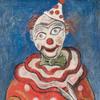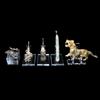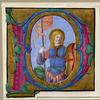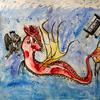HAWTHORNE FINE ART ANNOUNCES MOVING SALE AND GALLERY OPEN HOURS DURING JANUARY AND FEBRUARY
- NEW YORK, New York
- /
- January 10, 2018
Hawthorne Fine Art is excited to announce a moving sale. The price reduction will encompass all of the paintings in the gallery’s inventory, which includes some of the best examples of American Art in the categories of Hudson River School, Impressionism, Figurative and Genre, Still-life, Historic Women Artists and New York City scenes. In order to fully showcase its inventory, the gallery (located at 12 E. 86th Street) will hold open walk-in hours each Friday and Saturday from 12 pm until 4 pm during the months of January and February. Hawthorne Fine Art will remain open by appointment at all other times. This Spring, Hawthorne Fine Art will move to a new suite in the same building.
Hawthorne Fine Art’s inventory of Hudson River School paintings includes some fine examples of pieces rarely offered on the market. Jasper Francis Cropsey’s The Island Cottage, American Scene, previously believed to be lost, is a brilliant luminist antebellum view of the Catskills that reflects the influence of Frederic Church in Cropsey’s early work. Frank Anderson’s masterful Gathering Leaves, which comes from the family of the artist and has never before been offered for sale, is a testament to Anderson’s innate talent for depicting the natural world. William Hart’s Summer Idyll in the Hudson Valley, which presents a sweeping view of the Hudson River Valley with an Italianate villa painted in minute detail, is a rare and very early example of the pastoral landscapes for which he became well-known. Jervis McEntee’s Vermont Sugaring, a dreamy, pink-hued winter scene, signals the artist’s transition from the Hudson River School to the Barbizon style.
The gallery also offers a wide selection of exceptional American Impressionist paintings. Charles Courtney Curran’s Apple Perfume, in which his daughter Emily, encased in light, savors a moment of quiet solitude amidst a grove of apple trees, is an endearing representation of the feminine archetype the artist frequently sought to convey in his work. Painted in the midst of Curran’s most successful years, the work is an excellent example of his fully-developed, blended style. Walter Douglas’s The Garden, a charming scene of a little girl tending to her flowers, is a quintessential example of American Impressionism, with its dapple-lit garden subject matter and genteel figuration.
Hawthorne Fine Art’s superb offering of Figurative and Genre scenes reflects the diversity of subject matter depicted by artists of the nineteenth and early twentieth centuries. Paul Moran’s Lady Sewing, a warm interior scene of an elegantly-dressed woman, showcases Moran’s adept ability to capture textures, seen in the exquisite rendering of the shimmering satin gowns and fur rug. George Cochran Lambdin’s The Gentle Sister depicts a quiet moment between two siblings seated on the floor of a rustic home. Its minute detail and delicate attention to fine lines and precise modeling is typical for Lambdin’s anecdotal genre scenes, for which he was well-known. George Lafayette Clough’s serene Balcony Bridge, Central Park, New York City, captures a quiet moment in the now-bustling park’s early years, against the picturesque backdrop of the Upper West Side. Painted in the late period of Clough’s career, this is a masterful example of the Brooklyn-based artist’s depictions of local urban scenes, which are among his most praised and collected works.
The gallery also offers a variety of excellent American Still-lifes. Lemuel Wilmarth’s meticulously-rendered Still Life with Peaches highlights the artist’s technical skill in the elevation of his subject through the careful depiction of sumptuous textures, exceptional finishing and trompe l’oeil details. Minerva Josephine Chapman’s Lilacs, painted in her typical Impressionist style, reflects the darker and more subdued palette the artist adopted as her career matured during her professional training in Paris.
Hawthorne Fine Art continues to pride itself in recovering the works and careers of Historic Women Artists, of whose works the gallery prioritizes in its collecting practices. Virginia Chandler Titcomb’s In the Catskills, Looking Towards Hunter Mountain, is a rare example of Titcomb’s work as a painter. The tight zig-zag composition and attention to the varied quality of the scene’s light and atmosphere makes for an engaging scene of idyllic tranquility. Abigail Tyler Oakes’s View of the Hudson River is a rare example of the artist’s adept use of deceptively simple compositional devices to create a scene with a variety of depth and visual diversity. In a subject reminiscent of Thomas Cole’s The Oxbow, the meticulous detail in the foreground and attention to atmospheric effects in the background of the painting reflect Oakes’s technical skill and intimate knowledge of the work of her Hudson River School predecessors and contemporaries.
As a Manhattan-based gallery, Hawthorne Fine Art highlights many scenes featuring New York City. Paul Cornoyer’s Early Evening, Empire Park, New York, an Impressionist style rendering of modern urban daily life, is a typical example of Cornoyer’s artful vignettes of New York City for which he was well-known. Mary Fairchild Low’s Battleships on the Hudson River, an unusual subject in her Impressionist oeuvre, depicts the United States Navy fleet at the close of World War I. Painted mid-career, this tonal work features precisely-rendered forms against a hazy atmosphere executed in a constrained palette, which creates an eerie juxtaposition.
Among Hawthorne Fine Art’s distinguished collection of American paintings, Walter Launt Palmer’s The First Snow stands out as one of truly excellent quality. An early and excellent example of the academic style winter subjects for which Palmer became well-known, this magical snow scene with shadows rendered in blue reflects Palmer’s mastery of color and his revolutionary and highly-influential technique. Truly rare for today’s market, this exceptional scene simultaneously conveys the snow’s softness and grandeur.
While a select few paintings are highlighted here, the entirety of Hawthorne Fine Art’s diverse collection is accessible through the Inventory page of the gallery website, HawthorneFineArt.com. For more information or to make an appointment outside of normal gallery open hours, please contact the gallery at info@hawthornefineart.com, or by phone at 212.731.0550.
About Hawthorne Fine Art:
Hawthorne Fine Art LLC is a Manhattan based gallery that specializes in 19th and early 20th century American Art. We select our works for their quality, beauty, and rarity and price them competitively for the market. We curate our paintings with strong academic scholarship and provide all of our clients with insight into the value of the work by elucidating its place within the artist’s larger body of work as well as the artist’s position in the market and more broadly, within the history of American art.
We are dedicated to the careful cultivation of both private and institutional collections and we strive to provide all of our clients with beautiful and inspiring pieces. We offer our clients, who may be looking to expand or refine their collections, advisory and appraisal services and we advise on issues regarding provenance, dating, authenticity, and the framing of works. With our strong commitment to research, scholarship, and education we honor the hard work of the artists we represent through the production of museum-quality exhibitions and scholarly catalogues.











__Buffalo_Hunt100x100_c.jpg)



